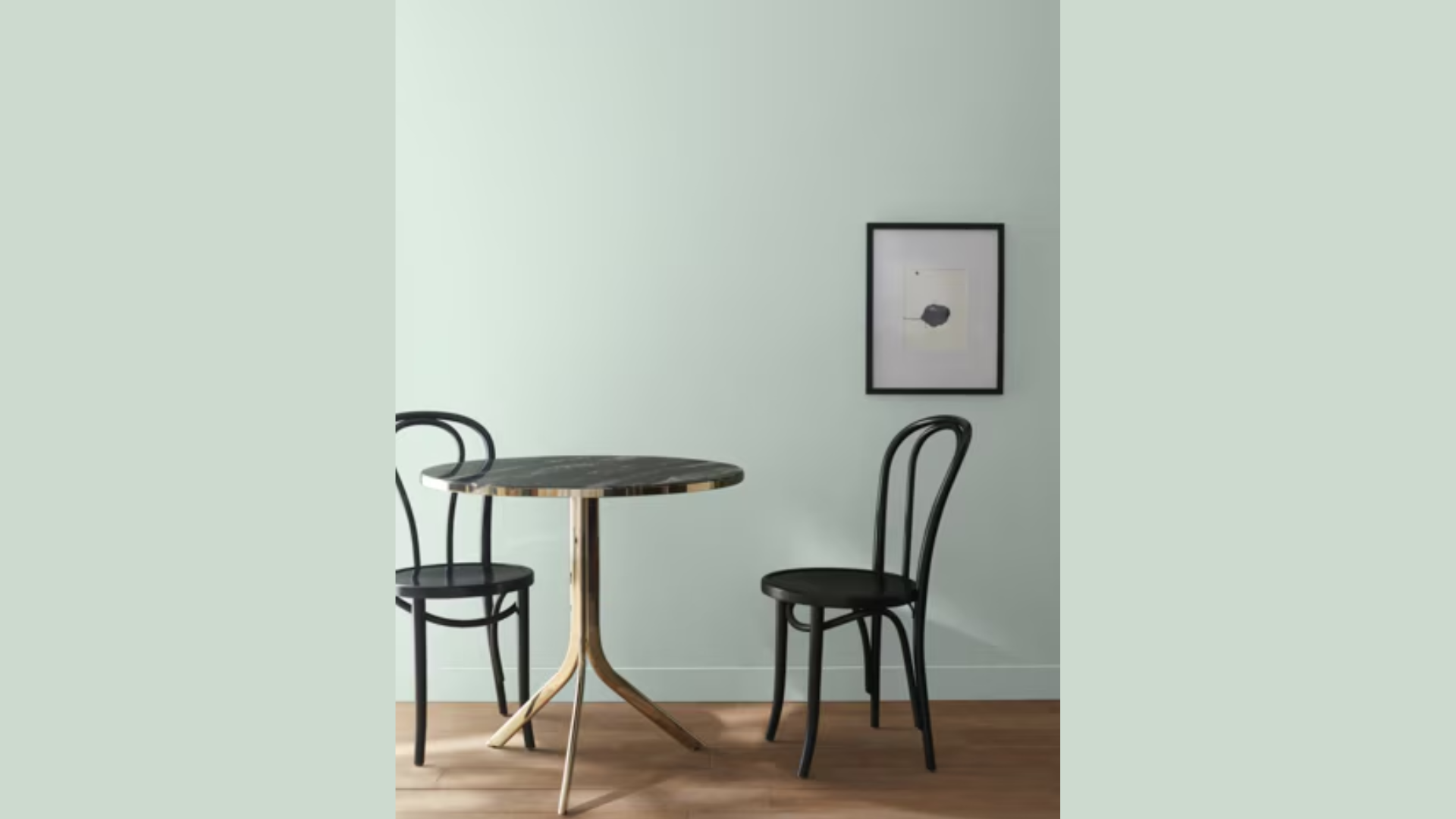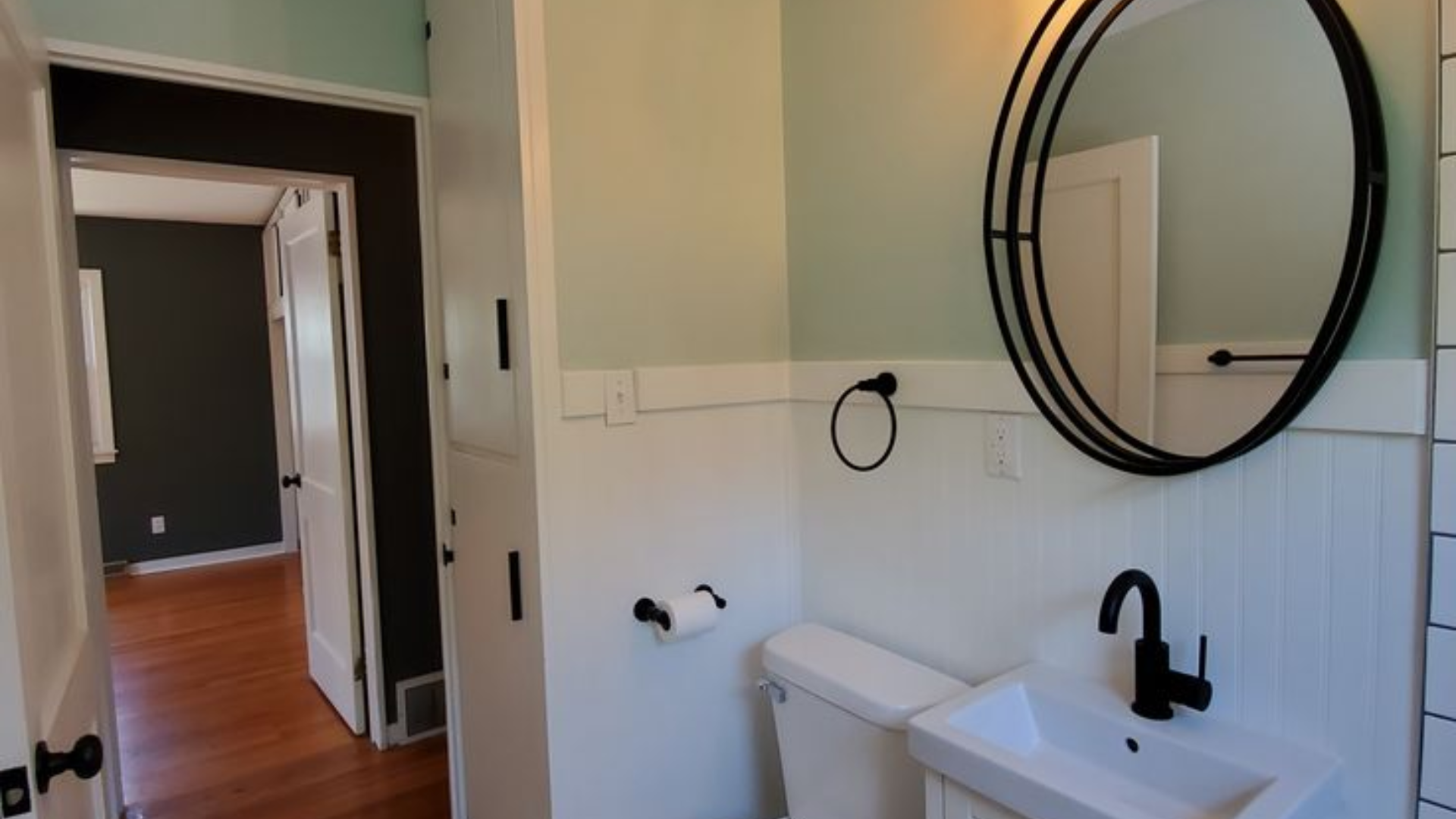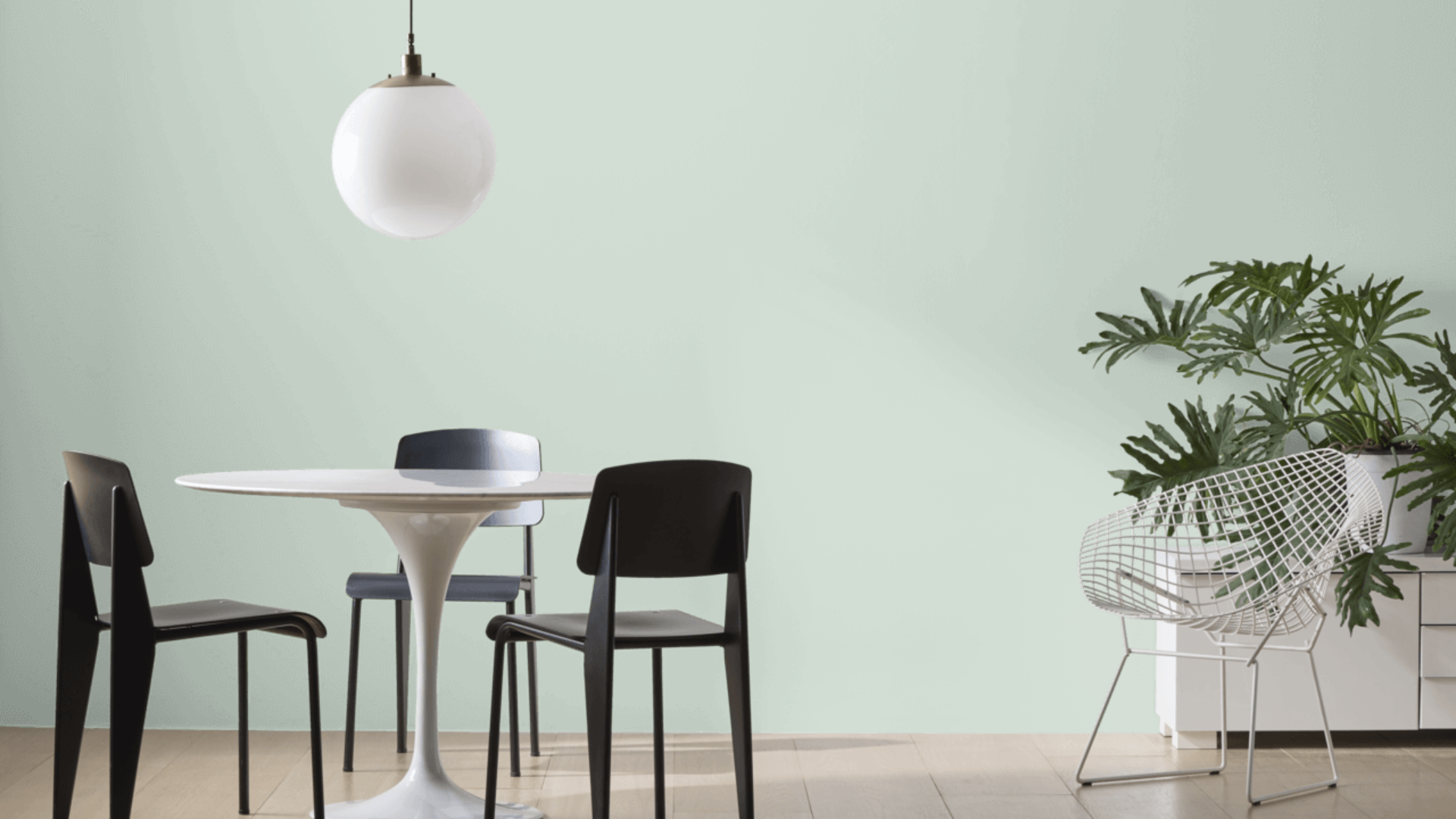Picking the right paint color can feel like a puzzle. Ever looked at a wall and wondered which color would make your room awesome?
Benjamin Moore’s Colony Green might be just what you need. In this review, I’ll show you everything about this soft green shade that’s getting a lot of attention.
You’ll learn:
- How Colony Green looks in different rooms
- Tips for lighting
- Best furniture matches
- What works and what doesn’t
I’ve tried this color in many spaces and want to help you make a smart choice. Picking paint isn’t easy. I know how frustrating it can be to spend time and money on a color that doesn’t look right.
Whether you’re painting your first room or you’ve done this before, this guide will help you pick the perfect color. I’ll break down Colony Green and help you see if it’s right for your home.
Why Colony Green Is the Perfect Choice for Your Space?
Colony Green stands out because it brings color without feeling too strong. It adds life to a room but still keeps things cozy, making it a great pick for your home that needs a peaceful look with a bit of color.
- A tone that feels light but not dull
- Blends well with both light and dark furniture
- Performs great in rooms that get lots of sun or just a little
- Fits into older homes or more modern ones
- Looks nice next to warm wood or clean white trim
- Brings just the right amount of energy to a space
Colony Green gives you a color that still feels fresh. It’s a steady choice that works in many types of homes.
The Rich Undertones of Colony Green

Colony Green is not just plain green. It has soft gray and blue undertones that give it a balanced look and help the color feel grounded.
This shade can look different depending on the light. In bright rooms with lots of sunlight, it may feel a bit cooler or fresher. In rooms with soft indoor light, it often feels warmer and more settled.
Because of these changes, it’s smart to test the color on your wall first. I would suggest you try it on more than one wall and check how it looks in the morning, afternoon, and evening. This helps you see how the color will really feel in your space.
The Light Reflectance Value and Psychology of Colony Green
Colony Green has a Light Reflectance Value (LRV) of 65.82. This number tells us how much light the paint reflects. A higher LRV means the color will help brighten the space by bouncing more light around.
With an LRV over 65, Colony Green is on the lighter side. It brings a fresh, open look that works well in both sunny and dim rooms. The color still feels soft, but it will keep the room from feeling too dark.
In low-light spaces, this LRV helps lift the look without needing bright white walls. In brighter rooms, the color stays clear and smooth. It’s a solid pick if you want a color that doesn’t feel heavy.
Green is often linked to rest and balance. Colony Green follows this idea but with a softer tone that doesn’t feel strong or loud. It gives the room a steady and earthy feel.
The gray and blue hints in this color make it even more peaceful. These soft undertones help the mind slow down, which is helpful in spaces made for rest or focus.
This makes Colony Green a good pick for bedrooms, reading nooks, and home offices. It sets the tone for a quiet, thoughtful space without being plain or dull.
Where Is Colony Green Best Used in an Interior?

Colony Green fits in rooms that need a soft but clear color. It’s strong enough to stand out but not so bold that it takes over the space. You can use it in many rooms across the house.
- Bedroom: Helps the space feel relaxed and restful.
- Dining room: Adds color without being too bright.
- Bathroom: Works well with clean tile and soft lighting.
- Hallway: Creates a smooth flow between rooms.
How to Incorporate Colony Green Into Your Home Decor?

Once Colony Green is on the walls, the right decor can bring the whole room together. This color works well in many rooms because it adds color without feeling too strong.
You can keep the space soft or bring in contrast, depending on your style. In the living room, pair it with light wood, soft cream fabrics, and brass or matte black fixtures.
In the bedroom, use white bedding, brushed nickel lamps, and natural textures like woven baskets or soft rugs. In the kitchen, it looks good with wood or white cabinets and metal handles in gold or black.
Metals that match well include brass, matte black, and brushed nickel. These finishes help bring out the soft tone without clashing or looking too sharp.
To make the space feel more complete, layer in texture. Try linen curtains, soft throws, wood shelves, or leather chairs. These simple touches keep the space feeling balanced and warm.
Flooring can change how Colony Green looks and feels. The right floor will make the color feel soft, balanced, and easy to match. This green tone works well with both warm and neutral flooring styles.
Good floor options with Colony Green:
- Light oak or pine: This adds brightness and keeps things soft.
- Medium wood tones: Brings warmth without overpowering.
- Terracotta or tan tile: This adds an earthy look that feels cozy.
- Stone flooring: This gives a natural feel that matches the color’s tone.
- Light beige or gray carpet: This keeps the space soft and relaxing.
- Patterned rugs with cream or brown tones: Tie the space together without clashing.
With the right floor, Colony Green feels connected. For a balanced look, you can try matching rugs and furniture with both the paint and the flooring.
Colony Green vs. Other Soft Greens by Benjamin Moore
Soft green paints can feel clean and easy to live with, but they don’t all behave the same in light.
Colony Green stands apart because of its soft brightness and subtle undertones. To help you see how it compares, take a simple look at three similar shades.
| Color | Tone and Look | Light Behavior | Best For |
|---|---|---|---|
| Colony Green | Fresh green with a soft gray base | Reflects a lot of light, feels clean | Bedrooms, kitchens, and living spaces |
| Saybrook Sage | Earthy green with a warm yellow undertone | Feels warmer and more muted | Farmhouse kitchens, dining rooms |
| Soft Fern | Light green with clear yellow tones | Looks brighter and warmer in sunlight | Playrooms, entryways, and small bedrooms |
| October Mist | Gray-green with a strong earthy base | Changes a lot with light, feels moody | Accent walls, cozy corners, reading nooks |
Colony Green works best when you want something clean and soft that still feels fresh. It’s the better choice if you want green that holds up well in different lights without feeling too dull or too bold.
Conclusion
Colony Green brings a soft touch of color to your walls. It feels calm and cozy, which helps create a space that’s easy to live in. Its gentle green tone fits many home styles and works well in both light and shadow.
In this blog, we talked about its best uses, how light affects the shade, and what tones and textures go well with it. You also saw how it can work in living rooms, bedrooms, kitchens, and more.
If you’re thinking about painting with green, Colony Green is a good color to test. Try a sample and see how it looks at different times of day. You may find it brings just the right feel to your home.
To finish the space, use soft fabric, warm wood, or clean trim. These touches can help bring out the best in the color without much effort.
Frequently Asked Questions
Is Colony Green Good for Cabinets?
Yes, Colony Green can work well on kitchen or bathroom cabinets. It adds color without being too strong and pairs nicely with white, wood, or brass hardware.
What Ceiling Color Works with Colony Green?
Pairing Colony Green with a soft white ceiling helps brighten the space while keeping the wall color well-defined and balanced.
Can It Work in Rental Spaces?
Yes, if your rental allows paint changes, Colony Green is a safe choice. It’s light enough to feel neutral but still gives a soft, fresh look that works with many styles.
Will Colony Green Work with Patterned Furniture?
It can, as long as the patterns include soft or natural tones. Florals, stripes, or checks with beige, white, or gray often blend well with this color.

